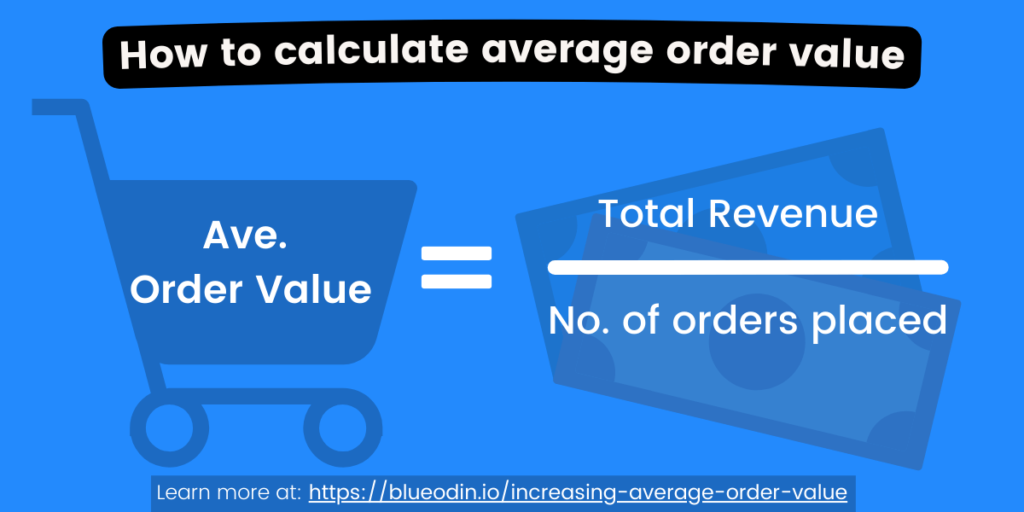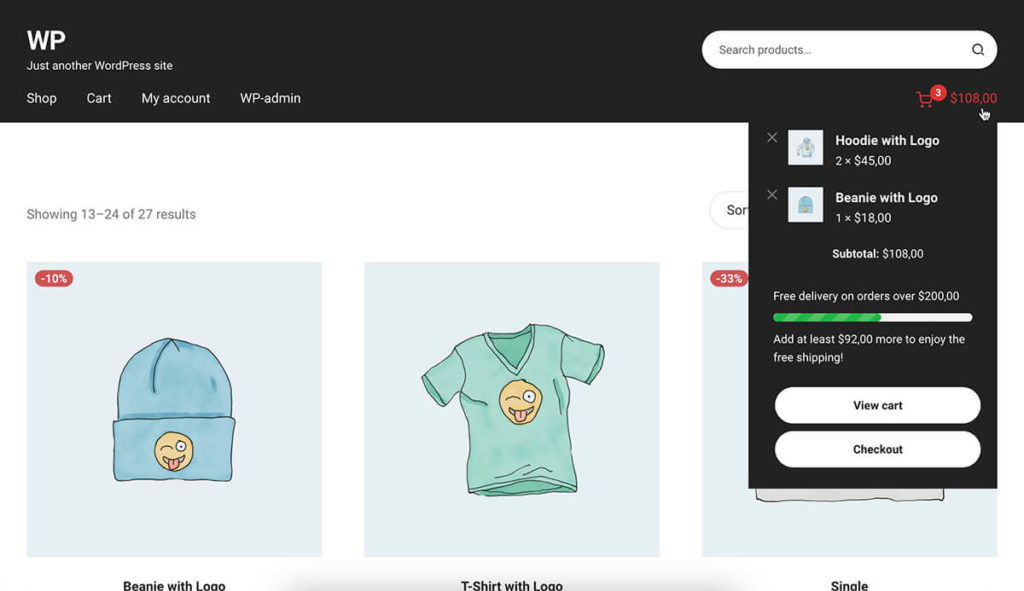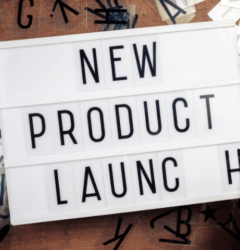
What’s the first thing that comes to mind when someone asks you how to increase sales and revenue without spending extra cash on marketing? If you answered increasing the average order value (AOV), you’re correct!
Generating sales by attracting new customers may seem like the fastest route to explosive growth. But it also requires money – lots of it! On the other hand, getting customers to increase their order value and turning them into repeat customers are two relatively easy ways to optimize sales and profit per customer.
We’ve already discussed how to turn a first-time buyer into a repeat customer here. So, today, we’ll be sharing several practical tips on increasing the AOV, so you can generate more profit for your store!
Table of Contents
- What is average order value and why is it important?
- How to calculate average order value?
-
How to increase average order value?
- 1) Sell only high-quality products
- 2) Incentivize buying more items per order
- 3) Offer free shipping when they reach a certain threshold
- 4) Create order minimums for product freebies
- 5) Upsell and cross-sell
- 6) Build trust and relationships with your customers
- 7) Market to repeat customers
- 8) Make your return policy clear
- Ready to work on increasing your average order value?
What is average order value and why is it important?
Average order value or AOV is a metric that tracks the average amount customers spend on a single order.
Order value is simply the total amount paid for by an individual customer on a single order, where they may have paid for 1 or more items per order. An AOV of $50 for January means that each paying customer spent this average amount in your store during this month.
The higher the AOV, the more money you make from the same number of customers. It only shows that you are maximizing the potential revenue on each purchase. Increasing the average order value directly impacts a store’s revenue growth.
If your AOV is lower than expected, you will need to adjust your strategy accordingly. Scroll down to the section below on “How to increase average order value?” for our tips.
AOV is an important metric that every ecommerce store owner should monitor and try to increase over time. By increasing AOV, you can:
- Increase customer lifetime value (CLV). CLV is an important metric that quantifies a particular customer’s worth to a business over their entire relationship.
- Recoup customer acquisition costs faster. If you spend $50 on every new customer, you want them to spend more than $50 to break even and start generating profit.
- Spend less money on acquiring new customers. This is especially important if you have no extra budget for new customer acquisition, but still want to hit internal sales targets.
- Increase overall revenue and profit. An across-the-board increase in AOV and CLV, along with a decrease in customer acquisition costs, will help put your store in the green.
How to calculate average order value?
There are 2 important variables you will need to have in hand to calculate your AOV – total revenue and number of orders.
Here’s the formula:
Average Order Value = Total Revenue / Number of Orders
Note that you will need these metrics for the same period, e.g. a specific date or date range.

Here’s an example:
Let’s say you run an ecommerce store selling high-end toys. In the last 3 months, you sold a total of $1,000,000 and 5,500 toys. Using the formula above, the AOV for the last 3 months is:
$1,000,000 / 5,500 = $181.82
What this means is that your customers spend an average of $181.82 per order. Is that a good AOV, you ask? Well, that really depends on many factors, such as the type of products you sell, how much you sell them for, your advertising spend, etc.
Here’s what Statista’s research says about AOVs in global ecommerce, differentiated by traffic source:
- AOV for direct traffic – $137.76
- AOV for email traffic – $103.14
- AOV for search engine traffic – $115.46
- AOV for social media traffic – $81.05
Of course, your numbers may vary, but nevertheless, these are good averages to keep in mind and be aware of.
Don’t want to manually calculate the AOV for your store?
Use an ecommerce dashboard like Blue Odin. You’ll find the AOV widget in the Stats section of your dashboard.

In the screenshot above, the AOV for the selected period (1 Jan – 31 Dec 2021) is £13.26, which is lower than the previous period’s £13.51. As you can see, Blue Odin gives you the most important metrics at a glance, so you can use it to drive your business forward!
Get to know the Blue Odin ecommerce dashboard here.
How to increase average order value?
Now that you know the significance of this metric, here are several ways you can increase AOV for your ecommerce store:
1) Sell only high-quality products
Did you know more than half of consumers buy products based on their quality? You’d expect most people would care more about pricing, but the data shows otherwise. In fact, only 38% of people purchase based on price vs. 53% who’d purchase based on product quality (source).
Let your products do the talking for you. If your customers love it, they will come back to buy more of it – perhaps in multiple quantities in a single order so they can gift it to loved ones.
2) Incentivize buying more items per order
Group related products that go well with each other to encourage customers to add more items. For example, if they’re looking at T-shirts, you can display products that complement them, such as hoodies and pants. Or if they’re looking at pet food choices, you can bundle them up together with a pet hygiene kit. Then sell these bundles at a discount, i.e. the total amount should be less than if they purchased each item in the bundle separately.
To incentivize more items being added to cart, you can offer tiered discounts, e.g. the more things they buy, the more money they save! For example, if they buy a single item, they get no discount. But order 2-3 more and they get a 5% discount. If they buy 4-5, they get a 10% discount, and so on.
Both strategies not only help drive sales, but it can also help move old or excess inventory – a win-win situation!
3) Offer free shipping when they reach a certain threshold
In addition to bundling products together, you can also offer free shipping if they reach a certain number of items per order. Of course, to remain profitable, you need to calculate all the costs and determine the minimum amount you can afford to offer free shipping. Otherwise, you’ll end up absorbing the shipping costs, which can cut into your profits.
To encourage more items to be purchased, you can use a plugin that shows users how much they need to add to cart to qualify for free shipping. WPC Free Shipping Bar for WooCommerce is an example of this type of plugin:

4) Create order minimums for product freebies
This is another strategy that helps with increasing the average order value. Encourage your customers to order a certain number of items to receive a free product. But the freebie has to be really valuable and worth adding a few more items to the cart for this to work.
You may apply this strategy together with tiered discounts (described in #2) and free shipping (described in #3 above) to increase perceived value.
5) Upsell and cross-sell
Cross-selling means suggesting additional products related to the customer’s primary purchase. For instance, if they bought a new phone, you could cross-sell a new case and other phone accessories. This is an effective strategy for increasing average order value quickly.
Upselling, on the other hand, is all about encouraging the customer to look at the more expensive option. For example, if they’re looking to buy an iPhone 12, you can upsell the latest iPhone 13 models instead. This will increase the order value at no extra cost to you.
For best results AOV-wise, train your team to upsell and cross-sell at the same time.
6) Build trust and relationships with your customers
Customer relationships matter a lot in business. Providing stellar customer service can lead to a lot of positive consequences. For instance, it encourages customers to remain loyal to your brand, which is important as customer retention is a whole lot cheaper than customer acquisition!
Another interesting statistic to take note of is that a 5% increase in customer retention can lead to a profit increase of at least 25%. This makes sense as the more they buy from you, the more they spend at your store as well — up to 300% more in many cases (source).
7) Market to repeat customers
These are people who’ve purchased from you previously, so they know what to expect from your company. If you follow tip #1 and sell only high-quality stuff, marketing to repeat customers shouldn’t be an uphill battle.
Plus, repeat customers are more likely to persuade their family and friends to check you out. Think of repeat customers as “influencers” telling their followers how much they love your product – that’s what happy repeat customers will do for you – for free!
8) Make your return policy clear
A robust return policy can build trust in your brand. According to Metapack, 63% of shoppers check out the return policy before purchasing. It is therefore important to make your product descriptions 100% accurate. Avoid misleading claims as that will only upset your customers and make them process a return (and refund) quickly!
Link to your returns policy on various pages of your website, e.g. the homepage, website footer, product pages, FAQ page, checkout page, etc. A visible returns policy will set the right expectations even before a purchase is made.
Ready to work on increasing your average order value?
Implement the tips we’ve shared above and track changes to your AOV. Then periodically evaluate the changes and see if these measures are successful. Now, you can either do the AOV calculations manually or use Blue Odin to do the heavy lifting for you! Click here to get started with Blue Odin.








